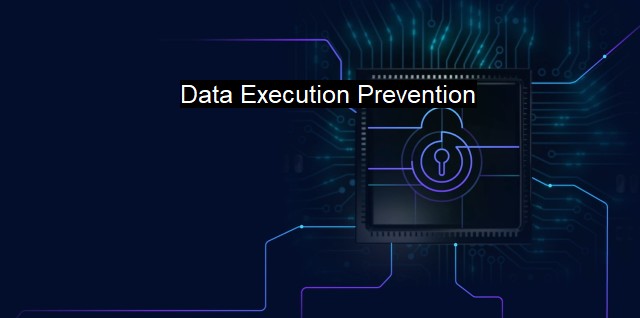What is Data Execution Prevention?
Data Execution Prevention (DEP) is a security feature included in many modern operating systems. Its primary function is to defend computers from, and protect users against, specific types of security threats, paramount among which are viruses and malicious software that attempt to run code from parts of the system reserved for other operations.Traditionally, computer memory spaces were classified into 'data space' and 'code space.' Both sections received different allocations based on their differing functions. Specifically, while the code space dealt with executing programs, data space was dedicated to storing data such as files and folders. This separation was imperative to maintain coherence within the system's runtime environment.
Clever as cyber-criminals usually are, they discovered a technique known as 'buffer overflow,' enabling the unauthorized insertion of alien code into a system's data space and prompting it to overflow to the code space. If successful, a buffer overload permits the injected code to infiltrate the system, unleashing multiple kinds of potential harm.
Data Execution Prevention was developed as a response to nullify these types of attacks by utilizing two methods: software and hardware-enforced DEP. Software-enforced DEP identifies risky regions that might get subjected to code injections in user mode programs, barring any execution process in the designated portions. On the other hand, hardware-enforced DEP chips enclose stricter regulations that separate portions meant for code execution from those reserved for data storage. This strategy aids in maintaining a strong firewall between the system's functional zones.
With Data Execution Prevention, computer operating systems can allocate memory spaces into distinct categories: those that can execute code and those that cannot. By distinguishing between these areas, the system can “prevent” any alien or unauthorized code from “executing” in a region reserved for data or off-limits for executable code.
Data Execution Prevention provides avenues for blocking or halting the execution of code expressly in memory regions identified as non-executable. Thus, applications are prevented from their uncanny ability to run malicious code even loosely clothed as data. This prevention thwarts the ambitions of numerous malware that depend on executing fascinating and disruptive exploits.
For this reason, DEP can be considered integral to cybersecurity efforts, offering a fundamental modus operandi for shutting down any disguised malware. Its technique closes an attack vector that will would otherwise remain open for cyber-criminals to exploit. Since DEP can greatly reduce the potential of malicious code executing from non-executable memory, it can profoundly improve a system's resistance against significant online threats.
On a concluding note, it is essential to acknowledge that DEP by itself cannot protect a system entirely from all threats. Aspects like software vulnerabilities, backdoor exploits, poor password management, and social engineering still pose credible risks. DEP should ultimately be viewed as one component within a broader, layered cybersecurity approach that includes factors such as secure coding practices, regular software updates, regular data backups, encouraged security awareness, and the use of antivirus software.
When used in conjunction with other cybersecurity measures, DEP adds another formidable layer of protection to a system. By preventing the illegal use of memory, it ensures that potential invaders don't find a foot in the door. Just like an antivirus software functions to flesh out identified threats, DEP operates in the backdrop, silently affording an added layer of resilience that stiffens the system's defense infrastructure. Together, they form an important arsenal in the ongoing battle against the ever-evolving landscape of cybersecurity threats.

Data Execution Prevention FAQs
What is Data Execution Prevention (DEP)?
DEP is a security feature in Windows that helps prevent malicious code or malware from running on your computer by monitoring your system memory and preventing programs from executing code from protected memory regions.How does Data Execution Prevention work?
DEP works by flagging certain memory regions as non-executable, which prevents code from being executed in those regions. Malware that attempts to exploit a vulnerability in a program's code cannot execute in the protected memory region, thereby preventing the attack.Do all antivirus programs support Data Execution Prevention?
Yes, most modern antivirus programs support DEP. It is an essential security feature that helps protect against a wide range of threats, including viruses, Trojans, and other malware.Is Data Execution Prevention enough to protect against all cyber threats?
No, DEP is just one of many security features that should be used in conjunction with other security measures, such as anti-virus software, firewalls, and regular software updates. While DEP can help prevent certain types of malware attacks, it cannot protect against all cyber threats.| | A | | | B | | | C | | | D | | | E | | | F | | | G | | | H | | | I | | | J | | | K | | | L | | | M | |
| | N | | | O | | | P | | | Q | | | R | | | S | | | T | | | U | | | V | | | W | | | X | | | Y | | | Z | |
| | 1 | | | 2 | | | 3 | | | 4 | | | 7 | | | 8 | | |||||||